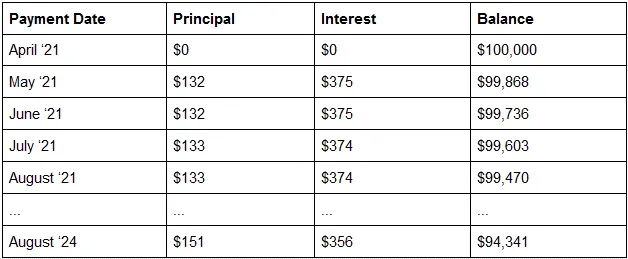Mortgage Amortization
The term mortgage amortization is the steady switch occurring to each mortgage payment between how much interest is covered and how much principal each month. Simply put, mortgage amortization is the plan for repaying a mortgage. Because the debt diminishes with each payment, the interest diminishes, and because the interest decreases monthly, the principal coverage increases with each payment.
The Mortgage Amortization Definition
Amortization is the way through which mortgages are repaid. This feature can be applied to mortgages with an equal monthly payment and a fixed timeline. Mortgages, as well as other loans, can be amortized.
Let’s see this through a more practical explanation. The trademark of an amortized mortgage or amortized loan is the shift from paying mostly interest every month to mainly paying principal every month. The math goes like this: for a $100,000 mortgage with a 4.5% interest rate, amortized over a span of 30 years, the fixed monthly payment totals at $507. In this value, during the first month, we will see that $375 goes to cover the interest, and the remaining $132 covers the principle. Towards the mortgage’s mid-term, there is a switch with $249 going to the interest and $257 to the principle. The last mortgage payment will be split into $2 for the interest and $505 for the principal.
How does Mortgage Amortization work?
Mortgage amortization is a repayment plan that uses an amortization table or amortization schedule as a way to visualize the concept. An amortization schedule is a grid or table showing how payments are split between the interest and the principal, and the balance that remains after each payment. Below you can see how mortgage amortization works in time.

With mortgage amortization, after four payments, the balance reaches $99,470, and in 3 years, the balance is $94,341. An amortized mortgage is a loan where the balance decreases gradually at first and more abruptly in the final years. Similarly, equity is built slowly at first but more rapidly in the last years.
Popular Real Estate Terms
Geographic location that is gradually being developed as an urban area. ...
Individual or business to which all rights (usually intangile) to property have been transferred. ...
The definition of a bedroom community, or commuter town in real estate is a unique type of community that merely uses their homes to sleep, while doing everything else offsite. In a bedroom ...
Building with large unpartitioned floors areas often used for storage. ...
In a construction loan, payments made to a contractor as the various construction stages are completed. The contractor uses progress payments to pay the various subcontractors and suppliers ...
An interest rate charged on a loan that exceeds the legal maximum interest rate within the state. It is illegal to do so. The maximum interest rate may depend on the type of lender and ...
Person's sole ownership of real property. ...
A certificate of ownership in a real estate company. Pledged assets for a borrowing. An example is an office building serving as collateral for the mortgage. Way of protecting property ...
A method widely used for evaluating real estate projects. Under the net present value method, the present value (PV) of all cash inflows from the project is compared against the initial ...

Have a question or comment?
We're here to help.